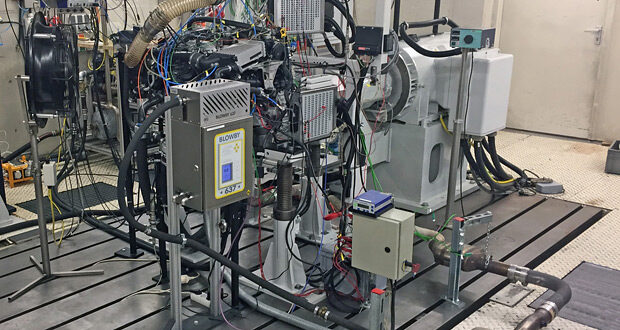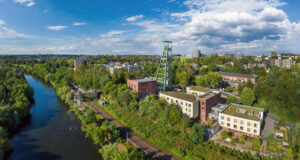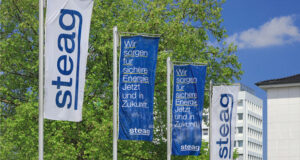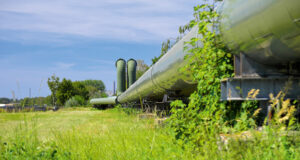We will have to get used to it. The traditional German miners’ greeting “Glückauf!” will soon be a thing of the past. Mining production will be fully automated in the near future: virtual construction site plans and start-ups, automated work processes, machine-to-machine communications, augmented reality and virtual reality. Digitisation and automation should make our working life easier, make it easier to anticipate faults, make processes more efficient and new drives should make mining operations environmentally friendly. The VDMA Mining Technology Days from 7th to 10th September 2020, which were held as an online conference, provided comprehensive information about the trends and impressions of what the future in mining will look like.
Collecting and evaluating data is a topic that concerns us all, key word: Big Data. But it is not enough to just collect data. Only if you are able to evaluate the data and derive actions and forecasts from it is it of use to the mining companies and the employees on site. There is still a long way to go before mobile machines can operate autonomously and make their own decisions, let alone learn independently. The RWTH Aachen University is currently conducting research in the Advanced Mining Technologies (AMT) Department. The scientists have equipped a mobile device with the corresponding technology so that, e. g., it finds its way through a cave system without natural light, can detect cracks in the rock using infrared thermography and distinguish between coal and surrounding rock by means of acoustic signals. In this test setup it is initially about determining states. Another task is to develop interfaces which forward the results to the machines involved in the work process. Once this technology is fully developed, the miner no longer has to be present in inaccessible locations.
Yet it is not only the effects on the people that play a role in the research, but also the geological conditions in the deposits. The hunger for raw materials has been growing for decades, as a result the best sources have already been exploited and the ore grades are worsening. Irregular geological conditions, decreasing mineralisation and thin layers of deposits are obstacles which mining companies have to overcome. The smaller the companies are, the more difficult this task is. The Institute of Mining and Special Civil Engineering at the Freiberg University of Technology and Mining Academy researches solutions for smaller and medium-sized companies, e. g., at a central mine control station, with a test field for Through-the-Earth communication (TTE). One conclusion is that there is no standard solution for the data transfer, but every mine requires a specific network configuration with small intelligent devices. Depending on the range, the transfer rate and the medium, the scientists have developed a manufacturer-independent SCADA system – MoSC –, which works with .NET Core, a Firebird database, OPC UA and a web-based front end with Angular and Web GL. All elements are flexible, freely accessible and platform-independent. The central mine control station can be extended with M2M communication. The research mine Reiche Zeche works with WLAN optimisation, whereby the signal is supplied to two locations at the same time. The system monitors target-actual values, visualises processes, guarantees a safe environment and utilises the machines better.
Digitisation is also driving the industry with its product developments. Assistance systems and semi- or fully automated machines should guarantee safety, speed, continuity, information and, of course, productivity. Geostatistics alone delivers a continuously up-to-date deposit model with data models recalculated on a daily basis. This saves core drilling and chemical analyses. Radio, automated machines and systems and digital central mine control stations help the operations manager to control the mining. The training and educational profile in mining has now completely changed.
Despite everything, mining remains a “tough” business. The machines need powerful drives, which are environmentally friendly at the same time. The climate targets set standards. Combustion engine out and battery in – unfortunately it is not that simple. Fire and explosion protection, the durability and operational capability of the battery systems, the underground operation site, all these are points that must be considered. One way to not completely get rid of the combustion engine for suitable applications is to combine it with hydrogen, which has been manufactured using renewable energies. The scientists at the Institute of Internal Combustion Engines and Thermodynamics at the Graz University of Technology are researching options (Figure 1). They were able to ascertain that hydrogen concepts have a full load and efficiency potential comparable to the diesel engine with zero CO2 emissions. The technology is fully developed and affordable. Such engines could mainly be used in distribution vehicles.
Paul Althaus, Chairman of the Research and Technology Steering Group, summarises the VDMA Mining Technology Days as follows: “The companies and research institutes who gave us an insight into their developments over the four days clearly point out that fully digitised mining will soon be a reality. We must fully adapt in our operations and especially in the training of our employees. Then we can all benefit.”
With an export rate of 96 %, mining technology is one of the most export-intensive branches of German mechanical engineering. VDMA Mining represents well-known, mainly medium-sized companies from the areas mining above and below ground, processing technology, as well as consulting, research and development. 145 companies are members of VDMA Mining. They account for over 90 % of the total sales volume.
(VDMA/Si.)



